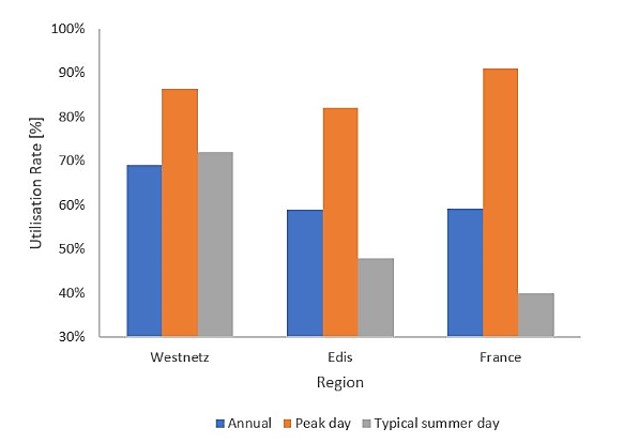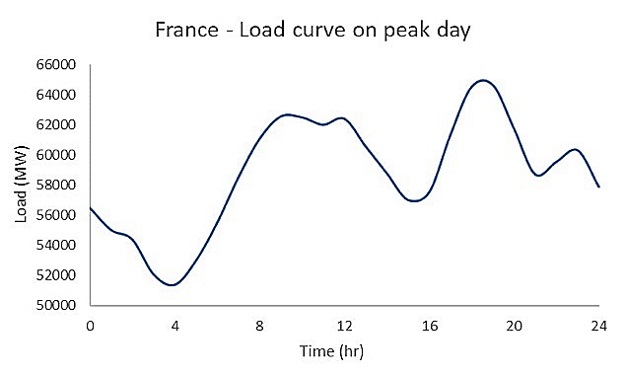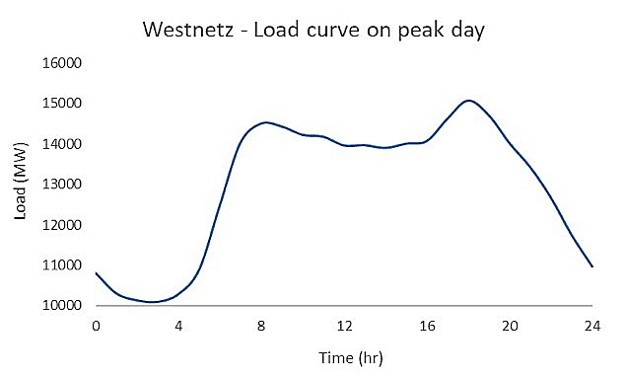Electricity distribution networks in Europe run at well below their full potential, finds a new study from the Regulatory Assistance Project (RAP). The findings show that the unused network capacity could be utilised for charging electric vehicles with little or no need for additional capacity. Smart pricing and smart grid technologies will be the keys.
“Waste not, want not,” goes the old saying. Airbnb and Uber have leveraged that principle—exploiting unused capacity in existing homes and cars—to build businesses that, in less than ten years, are together worth over $100 billion. So why not apply the same principle to electricity networks?
A lot of unused capacity is available on existing networks, capacity that is especially well suited to accommodating electric vehicle charging. A combination of appropriate pricing and smart technology deployment could help drive the best use of existing assets, helping to minimise the costs of the energy transition.
Shape of e-mobility uncertain
Transport and energy stakeholders and policymakers alike have identified the electrification of road transport as a key route to achieving decarbonisation of mobility. The combined effect of rapidly declining battery and electric vehicle (BEV, or simply EV) costs and improvement in their performance makes them a promising option.
Shifting EV charging to periods when existing resources are readily available would keep incremental investment in infrastructure to a minimum.
EV adoption rates could stall, however, if infrastructure needs are gauged based on worst-case assumptions about impacts on electricity demand. Many variables factor into the EV equation. EVs and related technologies, such as chargers, keep improving; fuel-cell electric vehicles will compete to play a role; and new developments are reshaping road transportation, including a trend toward vehicle sharing. The investments needed to electrify transport will depend on how these and other trends play out.
The good news is that EVs are a flexible load that can be charged at any hour when the vehicle is not in use. Shifting EV charging to periods when existing resources are readily available would keep incremental investment in infrastructure to a minimum. All consumers, not just those with EVs, would benefit from spreading the costs of existing infrastructure over more load and minimising risky new investment.
Utilisation of existing networks low
In our study Treasure Hiding in Plain Sight: Launching Electric Transport with the Grid We Already Have, we focused on distribution networks and found that existing networks generally run at well below their full potential.
We looked at the “network utilisation rate”—that is, actual throughput as a percentage of maximum possible throughput over a given period—for three areas in Europe: the Westnetz and Edis networks in Germany, and the French distribution network. The results are estimates because, surprisingly, few distribution system operators (DSOs) monitor the utilisation rate of their networks.
Our analysis demonstrates that ample network capacity is available to take up new loads such as EVs.
The graph below presents the results for three different timeframes: the annual utilisation rate, the rate for the peak demand day, and the rate for a typical summer day. The results suggest that these systems are operating at 50-70% of their potential. To place this in perspective, all current light-duty vehicles could be electrified with little or no need for additional network capacity. Furthermore, because we employed the conservative assumption that peak demand on the system is equal to the maximum capacity of the system, the rates presented here likely overestimate actual rates of utilisation. (This was a system-wide estimate and does not preclude the likely need for specific localized reinforcement.)

Our analysis demonstrates that ample network capacity is available to take up new loads such as EVs. Even on peak demand days, significant load can still be added outside peak hours, which are of relatively short duration, as shown in the next two figures. So how can we take advantage of this?


Both pricing and technology essential
Policy will be needed to drive exploitation of this existing network capacity for transport electrification, either directly by EV owners or by enabling innovative new business models. Two equally critical policy levers are available.
Time-differentiated, usage-based (or dynamic) pricing for both energy and delivery is one key. It empowers consumers to take action and save on their electricity bills, while benefiting the system as a whole. While dynamic pricing for energy has garnered increased attention in recent years, dynamic pricing for networks has gained little attention. On the contrary, recent trends are toward capacity-based, fixed network charges in several places in Europe.
In the short to medium term, time-of-use and critical peak pricing are feasible options to extract as much value as possible from network assets; a wealth of experience exists for such tariffs. In the longer term, as our power system becomes “smarter,” more sophisticated pricing, including real-time pricing, provides a more sustainable solution.
It will be difficult to assess the potential for these measures and gauge their effectiveness unless DSOs and their regulators better monitor network utilisation.
The other key is timely deployment of enabling network technology. Pilot projects for dynamic pricing have demonstrated that the benefits of smart prices increase when accompanied by smart technology, and vice versa. Consumers also sustain new behaviours longer when automated controls are available, through either individual adopters or demand aggregators. Policymakers and regulators should consider financial incentives and other measures to spur investment in smart technologies that help deliver public policy objectives, and they should remove all barriers to the active participation of aggregators in all markets.
Regulators and relevant authorities should not overlook consumer education. Educational programmes will be necessary to ensure consumers are aware of and can take full advantage of the opportunities smart pricing and technology provide.
Monitoring the utilisation of network investments key
It will be difficult to assess the potential for these measures and gauge their effectiveness unless DSOs and their regulators better monitor network utilisation. Examples of best practices can be found in markets like Sweden, where regulators have implemented regular monitoring coupled with outcomes-based regulation. Outcomes-based regulation is essential to ensure accountability, provide appropriate incentives, and identify any needed adjustments to regulatory frameworks.
So, what are we waiting for?
Exploiting unused existing capacity to integrate new electric transport at least cost and least risk to consumers is a no-brainer. Doing so, however, requires policymakers and regulators to act now. Network tariff design should reward rather than punish EV owners for charging behaviour that benefits overall system efficiency.
Adopting proven models for dynamic network charging can spur innovative new service business models whilst also ensuring fair network cost recovery. Policy support for deployment of appropriate technology will ensure that smart tariffs deliver maximum and sustainable benefits. Policymakers have an opportunity to set the table for the next great “sharing economy” success stories.
A version of this blog originally appeared in Energy Post.

